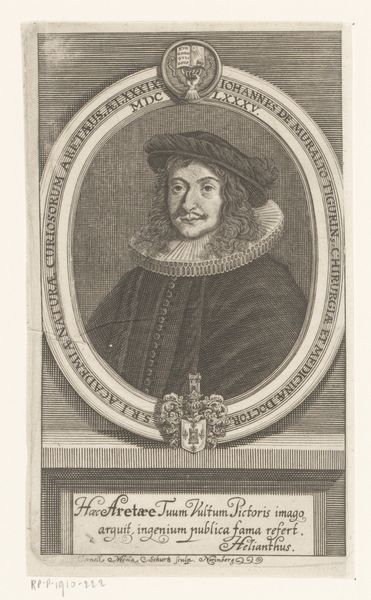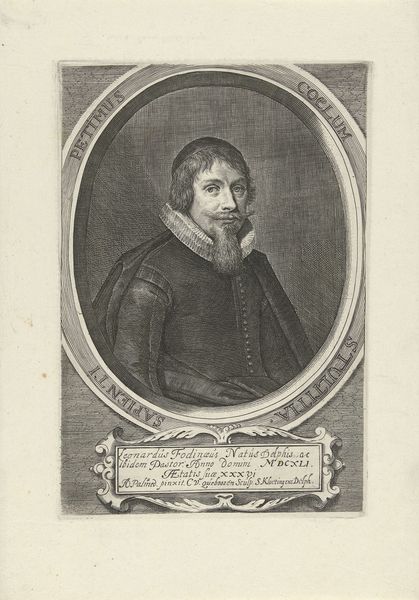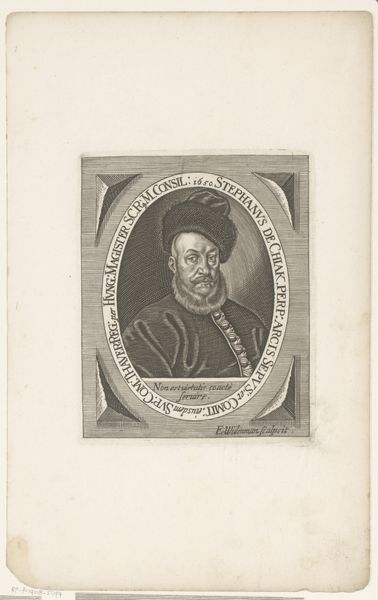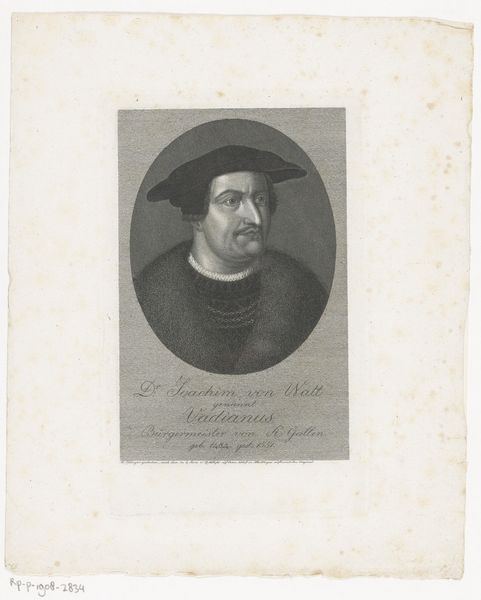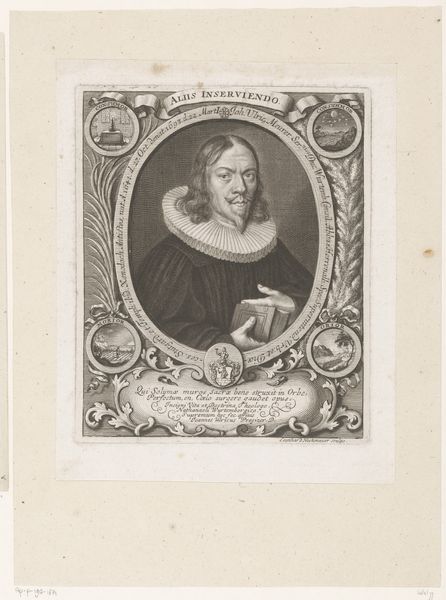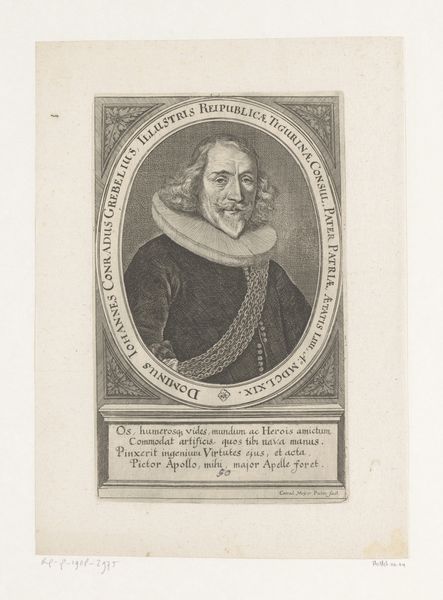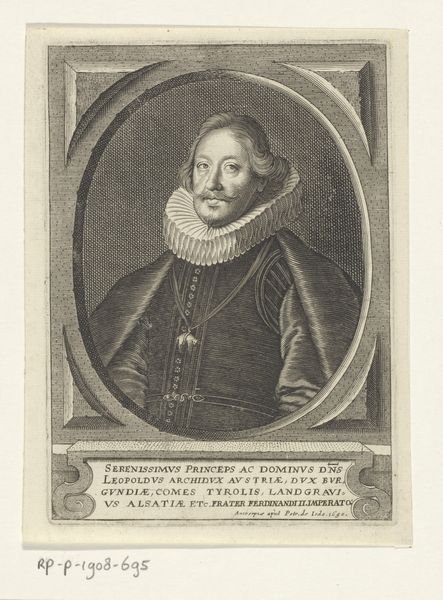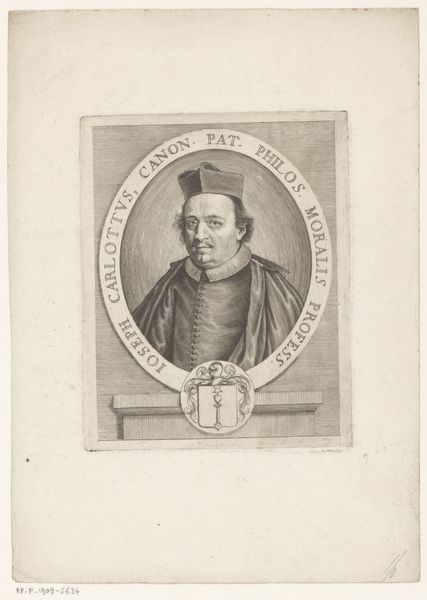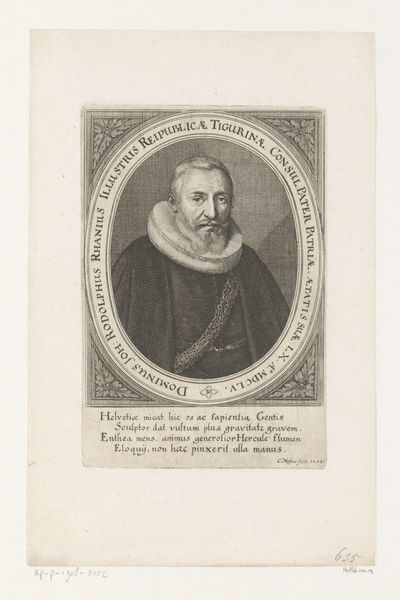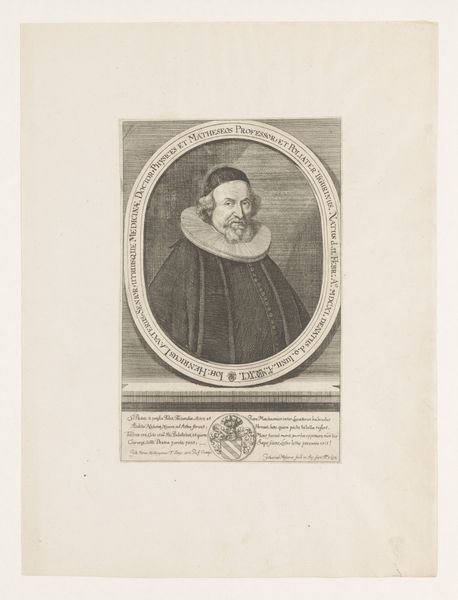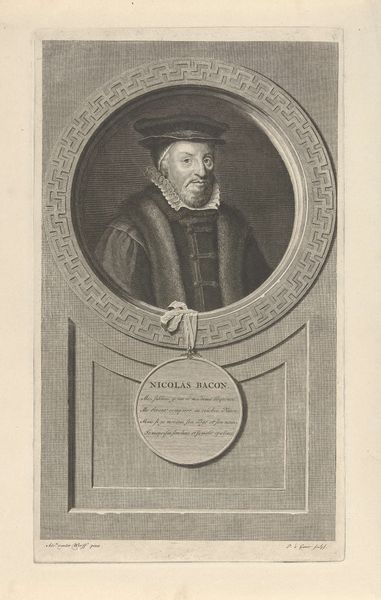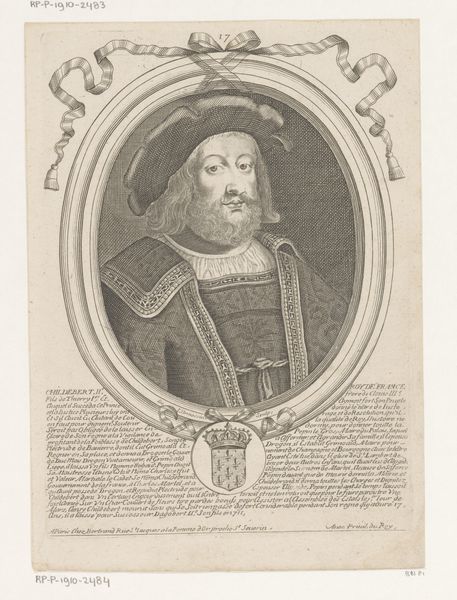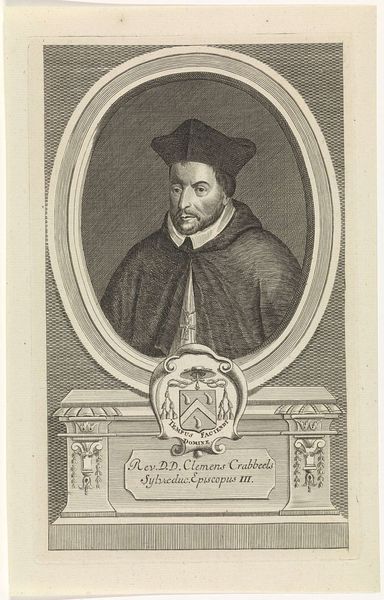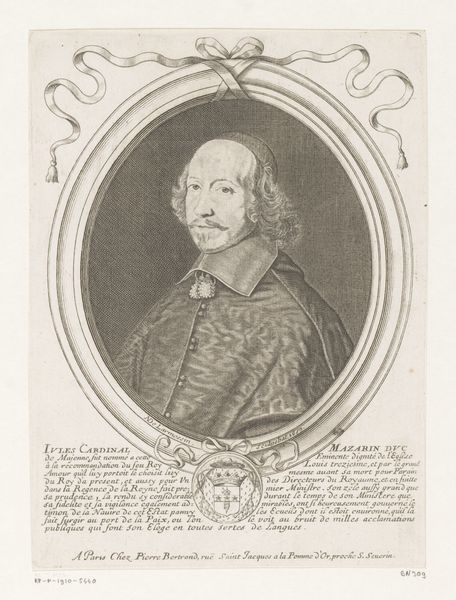
print, engraving
#
portrait
# print
#
history-painting
#
engraving
#
realism
Dimensions: height 106 mm, width 85 mm
Copyright: Rijks Museum: Open Domain
Editor: Here we have a print from between 1784 and 1826, "Portret van Jan van der Heyden" by Jacob Ernst Marcus. It's an engraving, very detailed. I'm struck by how the subject seems to be looking back at us, almost caught in a moment. What can you tell me about it? Curator: This portrait operates on multiple levels. Marcus is depicting van der Heyden, yes, but within a very specific cultural and historical context. Prints like these circulated widely, shaping public perception of historical figures. Consider how Marcus, working much later than van der Heyden's lifetime, is essentially constructing a narrative around this individual. How does this image attempt to define his legacy? Editor: So it's not just about likeness, but also about reputation? I notice the ornament below the portrait—is that significant? Curator: Precisely! It certainly hints at van der Heyden's accomplishments. It seems like the imagery celebrates ingenuity and innovation. This image emphasizes how his contributions were valued. Does that framing change how you view the central figure? Editor: It does. It makes me wonder about the power of images to build and reinforce historical narratives. Were prints like these intended for a broad audience, influencing how people thought about the past? Curator: Absolutely. They played a crucial role in disseminating knowledge and shaping public memory. Think of it as an early form of mass media, constructing and reinforcing particular versions of history. Now, consider what this tells us about the society that consumed this image, what were their values? Editor: That's fascinating. I hadn't considered how much of history is shaped by these visual representations and their availability to the public. Curator: Indeed. Reflecting on these images helps us think critically about what is highlighted, and more importantly, what is omitted from dominant narratives.
Comments
No comments
Be the first to comment and join the conversation on the ultimate creative platform.
